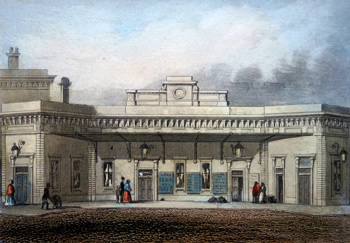Brighton Station is probably a reference to the London Terminus of that name rather than to the station at Brighton. London Bridge station was renamed Brighton Station [i] until a new station building was completed in 1864 [ii]

BRIGHTON RAILWAY STATION, LONDON BRIDGE. by Albert Henry PAYNE, , (1812-1902)
An engraving produced in 1852 for Payne's "Illustrated London, or a Series of Views in the British Metropolis and its Vicinity" (London : 1846-1847),
References:
[i] https://sbpc.regencysociety.org/brighton-railway-station-london-bridge/
[ii] https://en.wikipedia.org/wiki/London_Bridge_station